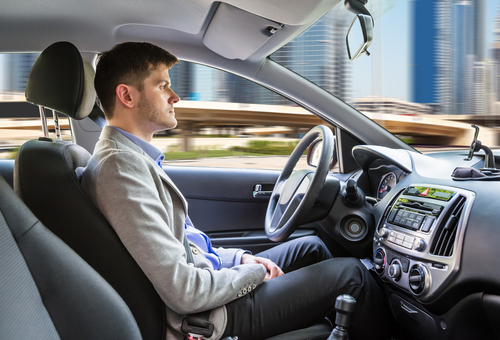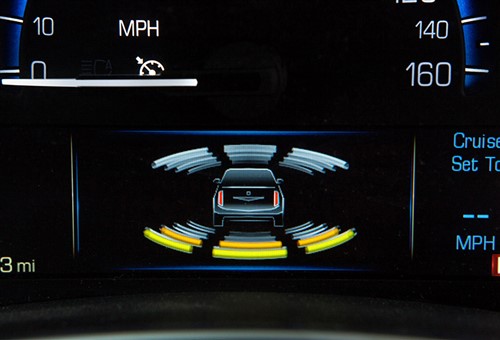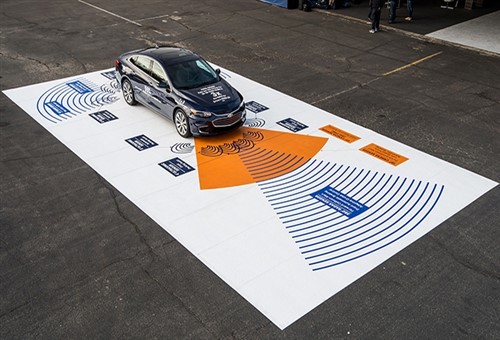
In some ways, young technicians and mechanics have a huge advantage over those of us who have lived through several major technological advances in automotive technology. Perhaps the biggest advantage young technicians who are just starting their careers have is that they do not have to "unlearn" anything, because all or most of the advanced vehicle control systems they encounter today were already in existence when they started their professional careers.
Not so for the oldest among us: for instance, we had to forget everything we knew about carburettors when fuel injection arrived. Similarly, we had to unlearn everything we knew about distributor-based ignition systems when distributor-less computer-controlled ignition systems arrived. We could also no longer rely on "gut-feel" diagnostics with the arrival of OBD I systems, and when OBD II matured, we had to forget what we knew about OBD I-based diagnostics- and so it went.
Of course, today's young technicians are not to blame for any of this, but very soon, they will be expected to master new ADAS (Advanced Driver Assist Systems) systems that are several orders of magnitude more advanced than anything they have encountered to date. There are several examples of such systems under current development today, but one particular example, known as “Super Cruise”, is already in limited use on some Cadillac models in the US domestic market. While this technology might take a year or two yet to reach Australian roads, it is perhaps advisable for young technicians to be aware of the ADAS revolution that General Motors is about to direct at them soon.
However, before we get to some specifics of General Motors’ new Super Cruise system and some of the ancillary ADAS systems that support its operation, let us take a brief look at-

Image source: GM Media
This image shows a section of the driver information display in a 2020 Cadillac CT6 sedan. The broken radial lines around the car icon represent areas around the vehicle that are under constant surveillance by a multitude of new-generation cameras, sensors, microphones, radar sender/receivers, and other devices that essentially, allow the vehicle to steer itself* under some conditions.
*Tesla has a similar autonomous steering system under development. Known as "Autopilot", Tesla is quick to state that their system is superior to GM’s Super Cruise system, but somewhat predictably, Tesla has elected not to release any technical information about the inner workings of their system.
Except for autonomous steering, most modern vehicles have at least some ADAS capability, and for the most part, ADAS systems like stability control, accident mitigation through autonomous braking, and electronic brake-force distribution have made it a lot safer to operate most vehicles under most operating conditions.
Nonetheless, in the Australian market, current ADAS systems present both mechanical and collision repair workshops with severe challenges* because the process of calibrating these systems requires not only specialised equipment but also access to OEM technical/service information that can (for the most part), only be obtained via expensive subscriptions to online, third-party resources.
* If you have not had much exposure to ADAS calibration processes, you should know that almost all manufacturers specify not only the use of vehicle-specific calibration targets but also access to huge, dedicated floor spaces that are both free of metallic objects and are equipped with glare-free lighting.
While we need not rehash calibration procedures for current ADAS systems here, we can say that the basic requirements outlined above make it very difficult, if not always impossible for the average independent workshop in Australia to accept ADAS-related work and/or recalibration jobs. However, the new-generation ADAS systems being developed by General Motors will almost certainly make it possible for independent mechanics to calibrate most of these systems without specialised tools and equipment, apart from a GM specific scan tool that is programmed with GDS2 software*. This is saying a lot but before we get to some calibration specifics, let us take a somewhat detailed look at GM's Super Cruise system both in terms of what it does, and how it works-
* Note though that not all GDS2 software versions may support SPS programming of new-generation ADAS control modules. Therefore, it may be necessary to use a J2534 interface tool and the TIS2Web SPS application. However, since obtaining these tools and software is not an immediate concern for us in Australia, we mention the specifics only as a matter of interest.
According to a technical document released by GM* in May 2020, Super Cruise is an advanced driver assist feature that allows an equipped vehicle to steer itself under certain conditions, albeit only on a limited network of compatible highways. Other official GM sources point out, however, that a “compatible” highway refers to a highway-
*This three-part document lists each available ADAS system, along with the name, and location of implicated control modules, as well as some details on whether or not a particular system and/or component requires calibration. It turns out that most new-generation GM ADAS systems are of the plug-and-play variety, in the sense that they calibrate themselves automatically. Essentially, this document provides a framework that describes the basics of each ADAS system.
In terms of practicalities, the Super Cruise system is controlled by a dedicated control module known as "[the] Active Safety Control Module #1"* that uses GPS data, extremely detailed roadmaps, and a host of cameras and systems to keep the vehicle centred in a driving lane. In practice, the system uses GPS positional data that is kept up to date in real-time, as well as a dedicated front view camera to keep track of road markings and road-side features (drawn from the Digital Map Module) to allow the vehicle to exercise fully autonomous steering.
* Super Cruise also has a second Active Safety Control Module, whose function it is to assume control over the Super Cruise system in case the primary control module fails.
While Super Cruise is the closest thing we now have in terms of cars that can drive themselves, albeit only under some conditions, the Super Cruise system is neither intended, nor designed to absolve drivers of their responsibility to operate their vehicles safely. To illustrate this point, GM has built two major supporting features into the Super Cruise system that force drivers to pay proper attention to their surroundings, these features being-
Enhanced Adaptive Cruise Control
Based on "normal" adaptive cruise control technology, enhanced adaptive cruise control can maintain the distance between an equipped vehicle and a leading vehicle even in stop-and-go traffic conditions. In practice, the enhanced adaptive cruise control on a Super Cruise-equipped vehicle can bring the vehicle to a full stop in slow-moving or stop-and-go traffic, although the (equipped) vehicle has to be “prompted” to start moving again by pressing the accelerator pedal.
However, enhanced adaptive cruise control depends on a), there being traffic in front of an equipped vehicle, and b), that leading traffic has to be within the observational range of the Long Range Radar Sensor Module, which is used to detect traffic moving in the same direction as the equipped vehicle.
Because of these requirements, the Super Cruise system will deactivate, and the enhanced adaptive cruise control will revert to normal cruise control in conditions where the Long Range Radar sensor cannot detect traffic in front of an equipped vehicle. These conditions typically occur when a highway is deserted, or where acute bends and corners even on compatible roads take leading traffic out of the long-range radar sensors’ field of view.
Driver Attention System
When the Super Cruise system is activated, its continued operation is supported by a dedicated system known as [the] Driver Attention System that monitors the position and movements of the driver's head continuously. In practice, this system is somewhat analogous to Mercedes' Fatigue Warning System, which uses dedicated cameras to monitor a driver’s eye movements to detect when a driver is in danger of falling asleep behind the wheel.
In the Super Cruise System, however, dedicated cameras monitor the driver's head to detect when the driver nods off, or when the driver's head stops moving, which the system interprets as a driver not paying attention to a), the road in front of him, and b), the flow of traffic around him. When the system detects what it interprets as a driver not paying attention to the road and/or traffic, both visual and audio warnings alert the driver to start paying attention to what is going on around him. In some cases, the system might instruct the driver to assume manual control of the vehicle’s steering. Note though that a driver can resume manual steering at any time.
Other ADAS systems that support the Super Cruise feature include, among others, the proximity warning, lane departure warning, blind-spot monitoring, rear vision, and forward collision warning systems. Whether or not the interactions between at least a dozen advanced ADAS systems make for better or safer driving conditions, seeing that an equipped vehicle does not need a human driver at times, is, however, not for this writer to say.
Nonetheless, from the above, it should be obvious that when the Super Cruise system is in operation, vast amounts of data has to be transmitted, received, and processed by multiple control modules in almost real-time, before being passed on to yet more control modules. Therefore, one would expect that calibration of the Super Cruise system is a complicated affair that requires highly specialised equipment, reams of OEM service information, and lots of time, but it turns out that the opposite is true, so let us look at-
During normal operation of the vehicle, the forward-looking camera looks through the windscreen to "see" the road ahead, and unless the windscreen is disturbed for some reason, there would be no need to calibrate or recalibrate the camera if it works as designed. However, some conditions require recalibration of the camera with the tools and software mentioned elsewhere, these conditions being-
In all of the above cases, SPS programming will be required, but in some cases, the calibration process will begin automatically and will complete without the need to set up vehicle-specific calibration targets in dedicated spaces.
NOTE: “SPS” programming stands for Service Programming System, which in GM-speak, is a system that is designed to prevent and/or prohibit unneeded or unnecessary programming events. Essentially, the SPS system detects software iterations, and it will prohibit or abort a programming event if the software or calibration version already installed in a control module is the same as the version that a user is attempting to install into that control module. In practice, this system ensures that only updated, patched, and corrected or revised software or calibrations can be installed.
While the above describes the basic operating principles and calibration requirements of the Active Safety Control Module that controls and manages the execution of the Super Cruise system as it relates to steering the vehicle, this system does not function in isolation. In practice, when the Super Cruise system is in operation, it is only one of many systems that work in conjunction with each other to exercise safe and reliable control over the vehicle’s speed, directional control, and spatial separation from surrounding vehicles and obstacles.
Achieving safe and reliable control over the vehicle requires extremely high levels of integration between implicated systems and control modules, but one particular system underpins the operation of the Super Cruise feature to a much higher degree than any other system, this system being the-

Image source: GM Media
As a practical matter, the adaptive cruise control system can operate in one of two modes: the first being “normal” operation, meaning that the system accelerates and decelerates the vehicle autonomously to maintain a user-set distance between the equipped vehicle and leading traffic. We all know how these systems work, and we do not need to discuss it further.
The other is "enhanced" mode, in which the adaptive cruise control system can maintain a safe following distance even in slow-moving and/or stop-and-go traffic, which is not possible to do in "normal" mode. Hence the qualifier, “enhanced”.
Nonetheless, both modes of operation use the Long Range Radar Sensor to measure distances, and both modes use the same controls and activation/deactivation methods. Moreover, both modes of operation depend on there being traffic ahead of the equipped vehicle; if no traffic is present, both modes will deactivate.
As is the case with any other vehicle with adaptive cruise control, the radar sensor has to be calibrated to OEM specification for the system to work, and this procedure can be difficult and time-consuming on most vehicles. However, on Super Cruise-equipped GM products, the calibration process can typically be completed in less than 30 minutes, and without using vehicle-specific calibration targets, to boot, so let us look at-
Calibration of the long-range radar sensor is typically required when one or more of the following events have occurred-
In terms of actual calibration requirements, a new radar control module will require SPS programming with a suitable scan tool, but the calibration of the module is accomplished by driving the vehicle. In practice, however, the calibration trip has to be performed on a road that has traffic on it, and with a scan tool connected to the vehicle until calibration is completed.
Other requirements include-
Under favourable conditions, calibration of the adaptive cruise control system can be accomplished in less than 10 minutes, although calibration times of between 10 minutes and about 20 minutes are more typical, which leaves us with this-
At the time of writing this, Super Cruise is available only in the US domestic market, and on only two Cadillac models. However, in the two years that the system has been available in the US, the network of compatible roads there has grown to over 200 000 km of highways that span across much of the USA. More to the point though, official GM sources also state-
Thus, while there is no telling when Super Cruise-equipped vehicles will arrive in Australia and other first-world markets that support compatible road networks, it is certainly possible that we will see this technology on our roads within the next three to four years. Of course, whether or not these vehicles will be allowed to operate in self-driving mode on Australian roads is an open question at this time, but if it turns out that they will be allowed, will you be ready to face this new ADAS revolution?